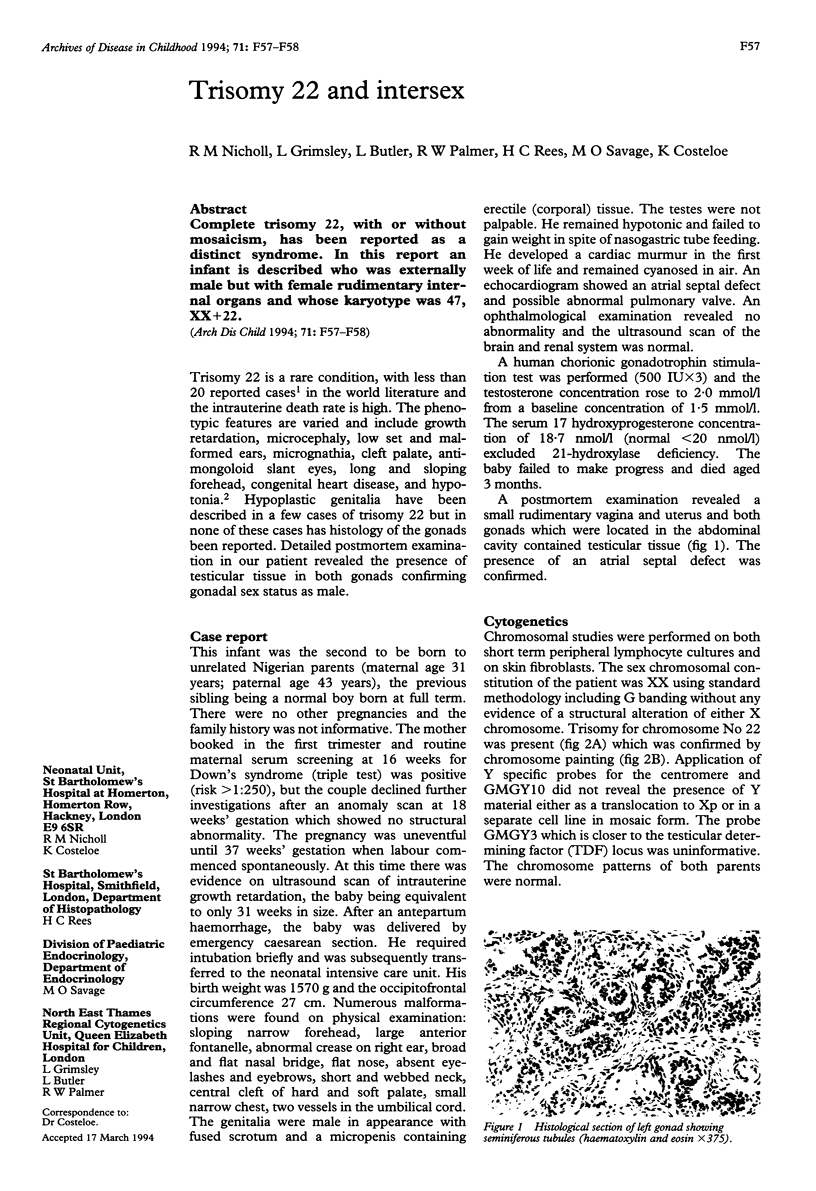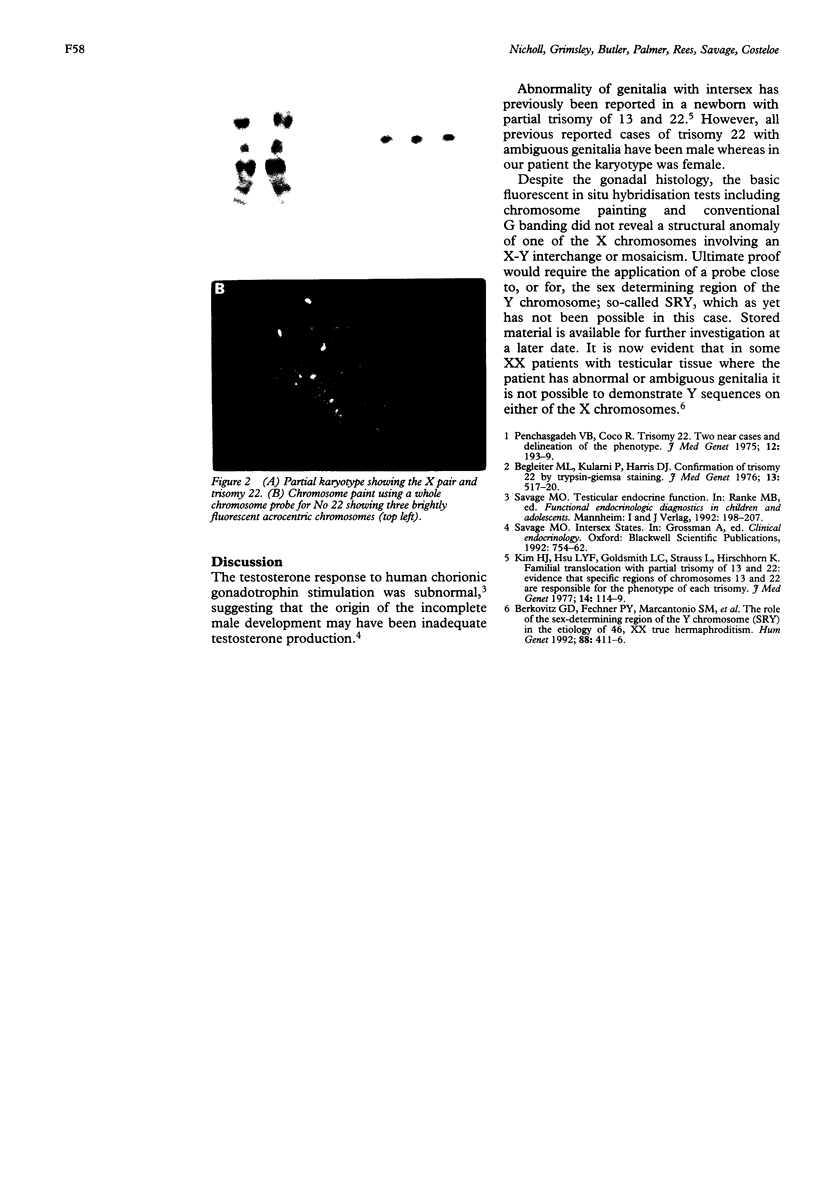Abstract
Complete trisomy 22, with or without mosaicism, has been reported as a distinct syndrome. In this report an infant is described who was externally male but with female rudimentary internal organs and whose karyotype was 47,XX+22.
Full text
PDF

Images in this article
Selected References
These references are in PubMed. This may not be the complete list of references from this article.
- Begleiter M. L., Kulkarni P., Harris D. J. Confirmation of trisomy 22 by trypsin-giemsa staining. J Med Genet. 1976 Dec;13(6):517–520. doi: 10.1136/jmg.13.6.517. [DOI] [PMC free article] [PubMed] [Google Scholar]
- Berkovitz G. D., Fechner P. Y., Marcantonio S. M., Bland G., Stetten G., Goodfellow P. N., Smith K. D., Migeon C. J. The role of the sex-determining region of the Y chromosome (SRY) in the etiology of 46,XX true hermaphroditism. Hum Genet. 1992 Feb;88(4):411–416. doi: 10.1007/BF00215675. [DOI] [PubMed] [Google Scholar]
- Kim H. J., Hsu L. Y., Goldsmith L. C., Strauss L., Hirschhorn K. Familial translocation with partial trisomy of 13 and 22: evidence that specific regions of chromosomes 13 and 22 are responsible for the phenotype of each trisomy. J Med Genet. 1977 Apr;14(2):114–119. doi: 10.1136/jmg.14.2.114. [DOI] [PMC free article] [PubMed] [Google Scholar]
- Penchaszadeh V. B., Coco R. Trisomy 22. Two new cases and delineation of the phenotype. J Med Genet. 1975 Jun;12(2):193–199. doi: 10.1136/jmg.12.2.193. [DOI] [PMC free article] [PubMed] [Google Scholar]




